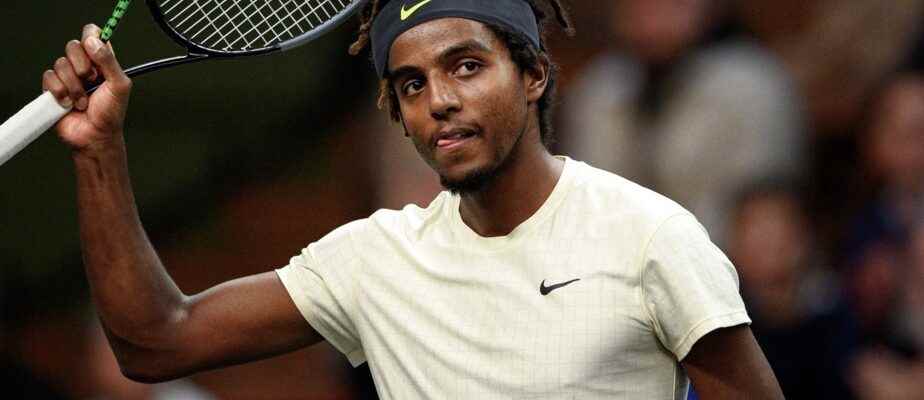A big batch today. Which means there’s more room for your next questions!
The lucky loser
In tennis, how is the lucky loser when a player forfeits the main draw? More than one player will have lost in qualifying. Why is one rather than another chosen?
Lucie St-Arneault
Response from Nicholas Richard:
The lucky losers are chosen based on the players who made it to the last qualifying stage. The highest ranked player among those who lost in the last round is favoured. If there is an additional need, the names of the players who hold a ranking are drawn at random. Thus, a player who may be ranked lower than another could take place in the main draw, due to chance.
The famous future considerations

PHOTO DOMINICK GRAVEL, LA PRESSE ARCHIVES
Sean Monahan during a Canadiens game against the Pittsburgh Penguins on November 12
Will we ever know the future considerations that have been given between the Calgary Flames and the Canadiens in two recent exchanges? Last March, Michael McNiven was traded to the Flames for future consideration. Then, in August, Sean Monahan was traded to CH for future consideration. Why didn’t you just say Monahan was compensation for McNiven?
Sr. Adrien Cormier
Response from Simon-Olivier Lorange:
Announcing “future considerations” is a polite way of saying that a team won’t get anything for the player(s) it trades, since one general manager is accommodating another. The two transactions you mention have no connection between them, but they clearly illustrate two situations, that of a marginal player and that of a high earner. McNiven, a minor league goaltender, no longer had a place in the Canadiens organization and was probably destined for the ECHL. He only belonged to the Flames for three weeks before being traded to the Ottawa Senators for the same “future considerations.” As for Monahan, the Flames wanted to get rid of his heavy contract. GM Kent Hughes was happy to help them out, but it cost them a first-round pick.
Who pays what?
When the players are away, are they fed and housed?
Louise Belec
Response from Simon-Olivier Lorange:
These elements are provided for in the collective agreement uniting the players to the League. Teams have a responsibility to house their players – the same way a so-called ‘ordinary’ worker probably won’t pay for accommodation on the road. For meals, a daily allowance is paid. When this collective agreement was signed in January 2013, this daily allowance was set at $100 per player, an amount indexed each year according to the American consumer price index.
Pick up the broken stick!

PHOTO PERRY NELSON, USA TODAY SPORTS ARCHIVE
Tampa Bay Lightning’s Nikita Kucherov (86) breaks his stick during a game against the New York Islanders in September 2020.
With four “striped men” on the ice, why not pick up the broken sticks and avoid injuries and accidents?
Jean-Pierre Laberge
Response from Guillaume Lefrancois:
This issue is in fact the good judgment of the officials. They won’t stop following the action just to pick up a stray stick. On the other hand, if there is a clearance, the referee behind the game, while catching up with the action, may well make a detour and pick up a broken stick.
“It’s a security issue, both for the official and for the players,” said Stéphane Auger, former referee, now an analyst at TVA Sports. We will also remember the heavy fall of Brendan Gallagher in the band, on October 22 against Dallas, after the small right winger had put his skate on a broken stick.
Ads are on the move!

PHOTO DAVID KIROUAC, USA TODAY SPORTS
There are static advertisements on the Bell Center tapes, which on-site viewers see.
When you watch a hockey game, you see advertisements that change frequently. It is assumed that this is not so in the arena. Can you explain how it all works?
Andre Rivest
Response from Katherine Harvey-Pinard:
The digital rink boards (Digitally Enhanced Dasherboards), introduced across the National League in October, use artificial intelligence. As you might expect, there is static advertising on the Bell Center tapes, which on-site viewers see. New technology now allows it to be virtually erased and replaced for television. According to an ESPN Network article published on October 3, there are five different areas that can be sold to sponsors, one behind the two nets and one in each of the three areas. A total of 120 30-second commercials are scheduled for each match. This new technology also means that each team can now sell advertisements when traveling abroad; thus, a Quebec viewer only sees advertisements from Quebec companies, even if the Canadiens are playing in Pittsburgh, for example.
Where does the voice come from?

PHOTO DOMINICK GRAVEL, LA PRESSE ARCHIVES
Félix Auger-Aliassime at the IGA stadium last August
I had the chance to attend a victory for Félix Auger-Aliassime at the IGA stadium, but I noticed that the linesmen who are usually seen near the ball hunters in the back of the field were not there not. Offline ball calls could be heard fine, but I couldn’t spot where the linesmen were positioned. Were they simply replaced by the video recovery system?
Bruno Choquette
Response from Nicholas Richard:
Your eye has not deceived you. Indeed, in the majority of major tournaments, as is the case in Montreal, the center courts are equipped with the Hawk-Eye system, which ultimately replaces the line judges. Even if it takes human resources away, this system is more reliable and less fallible. The voice you heard was recorded and sounded the OUT when the ball fell outside.
